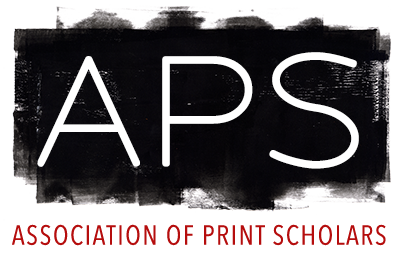No sidebar for this page. Contact administrator
Blog Post
Posted: 01/06/2022
“The Quarantine Question” on Art Journal Open
For their post on Art Journal Open, “The Quarantine Question,” guest editors Dana E. Katz and Lisa Pon asked colleagues—historians of art, architecture, landscape, and culture; visual artists and musician-musicologists; curators and museum educators—to answer the following question as of summer 2021: “How has the past year’s quarantine affected your professional life?”
An introductory essay frames the twenty-one responses received by the editors. It draws on the plague hospitals and ghetto of early modern Venice to provide historical context for the ongoing coronavirus pandemic, especially for the social-distancing measures taken to mitigate its effects. The contributions that follow afford a mosaic of perspectives on what one of the contributors refers to as l’époque covidienne. They range from discussions of art projects sparked by the pandemic to rich descriptions of COVID’s personal and professional impacts—and the difficulty of disentangling them. Read the article here.
Blog Post
Posted: 08/17/2018
Courtney Wilder.
"Explorations in Darkness and Light: Odilon Redon."
Blog post on The Getty Iris.
2012.
Blog Post
Posted: 08/17/2018
Courtney Wilder.
"Buck Teeth and All: True Lies in Early Color Printing."
Blog post on The Getty Iris.
2012.
Blog Post
Posted: 08/17/2018
Courtney Wilder.
"Beware Cupid’s Arrow! French Print Reveals Dangers of Romantic Mix-Ups."
Blog post on The Getty Iris.
2013.
Blog Post
Posted: 12/25/2017
John Amoss.
"Traditional Mokuhanga Pigment Mixing: Using a Wooden ‘Mortar and Pestle’."
Blog post on Tanuki Prints.
2017.
I had the pleasure of spending a month working at Mokuhankan Studio in Asakusa, Tokyo from May to June, 2017. One of many new experiences for me was, under the direction of Natsuki Suga (who worked under Kenichi Kubota at the Adachi Institute for 5 years) to make relatively large batches of color using wood board mortars and pestles. This is to assure the pigments’ quality and to create a well-mixed supply of color paste that is ready to use later. Each color requires it’s own sanded cherry board and pestle (pine with cherry faced using epoxy glue) that was made by Lee-san.
Blog Post
Posted: 04/09/2017
Helena E. Wright.
"Block Prints by African American Women Artists and Friends: Margaret Taylor Burroughs and Elizabeth Catlett."
Blog post on O Say Can You See? Stories from the National Museum of American History.
2017.
Did you ever cut a linoleum block in art class? While rolls of linoleum were used for floor covering from the 1860s, artists only began to use the material about 1910. Pieces of linoleum, sometimes mounted on wood blocks, were quick to cut and offered a readily available material for making bold lines for prints. The material took on a useful role in art education, and many students from the 1930s to today first learned about printmaking from cutting and inking linoleum blocks, also called linocuts.
Major artists including Henri Matisse, Pablo Picasso, and Roy Lichtenstein made linoleum cuts. You've probably heard of them, but it's possible you're less familiar with Margaret Taylor Burroughs and Elizabeth Catlett. For Women's History Month, here's a closer look at their work.
Blog Post
Posted: 03/11/2017
Aaron Slodounik.
"How Big Data can expose a nascent White (House) Nationalism."
Blog post on London School of Economics US Centre United States Politics and Policy Blog.
2017.
This essay argues for a new approach to civil rights advocacy using the lens of French Symbolism (Mallarmé et al.) and large datasets. I discuss how we can make implicit meaning explicit within contemporary political discourse by applying insights gained from my dissertation on the painter-printmaker-sculptor Paul Gauguin. Through pattern seeking and a creative application of the criteria of "actual malice" (established by the Supreme Court case New York Times v. Sullivan) we can begin to see instances of actual bias against identity groups protected by the Civil Rights Act of 1964.
Blog Post
Posted: 11/22/2016
Lisa Pon.
"Art Journal Open Bookshelf: Lisa Pon."
Blog post on Art Journal Open.
2016.
Blog Post
Posted: 09/04/2015
INK provides broad observations and synthesis of trends and events related to the print world, as well as criticism on specific subjects when appropriate.
INK is written by Sarah Kirk Hanley, who is an independent print specialist and critic as well as a frequent contributor to Art in Print. She is also an adjunct instructor at NYU and a consulting expert and advisor for several art appraisal services and online fine art marketplaces. Hanley is a member of Phi Beta Kappa, ArtTable, the College Art Association and the Association of Print Scholars. She has held positions at Christie’s, the Milwaukee Art Museum, and the Lower East Side Printshop.
Blog Post
Posted: 08/06/2015
Daniel Lienau.
"Print of the Day!! On Facebook, Linkedin and by e-mail."
Blog post on Print of the Day!!.
2015.
The Annex Galleries has been putting on-line a Print of the Day!! selected from inventory and discussed in some detail. This "blog" is sent through Facebook under https://www.facebook.com/daniel.lienau.7; Linkedin at https://www.linkedin.com/pub/daniel-lienau/12/57b/704 or sign up for a daily email at artannex@aol.com.
These prints cover a broad area of techniques, time periods, styles, images etc. I am always interested in hearing about corrections, additions or comments from colleagues regarding these works. Please let me know if you are interested in receiving these.
The link below takes you to facebook, just click on the first option on the top to see the daily posts.
Thank you for your interest.
Relevant research areas:
North America,
South America,
Western Europe,
Eastern Europe,
South Asia,
East Asia,
Africa,
Australia,
18th Century,
19th Century,
20th Century,
Contemporary,
Book arts,
Collograph,
Engraving,
Etching,
Lithography,
Monoprinting,
Relief printing,
Screenprinting
